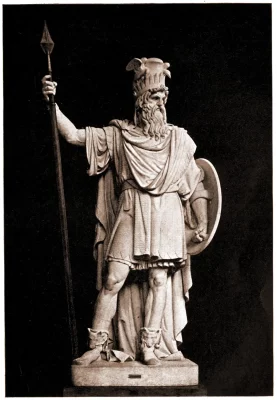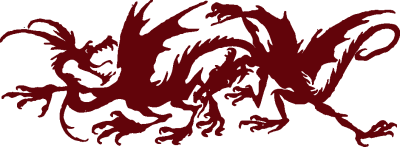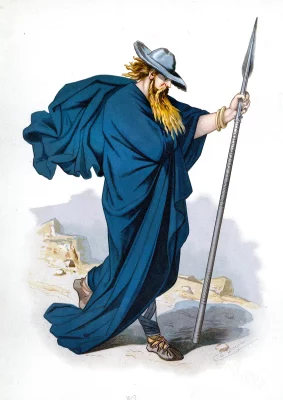
The Father of Gods and Men
ODIN, Wuotan, or Woden was the highest and holiest god of the Northern races. He was ODIN the all-pervading spirit of the universe, the personification of the air, the god of universal wisdom and victory, and the leader and protector of princes and heroes. As all the gods were supposed to be descended from him, he was surnamed Allfather, and as eldest and chief among them he occupied the highest seat in Asgard. Known by the name of Hlidskialf, this chair was not only an exalted throne, but also a mighty watch-tower, from whence he could overlook the whole world and see at a glance all that was happening among gods, giants, elves, dwarfs, and men.
“From the hall of Heaven he rode away
To Lidsldalf, and sate upon his throne,
The mount, from whence his eye surveys the world.
And far from Heaven he turned his shining orbs
To look on Midgard, and the earth, and men”
Balder Dead (Matthew Arnold).
Odins Personal Appearance
None but Odin and his wife and queen Frigga were privileged to use this seat, and when they occupied it they generally gazed towards the south and west, the goal of all the hopes and excursions of the Northern nations. Odin was generally represented as a tall, vigorous man, about fifty years of age, either with dark curling hair or with a long grey beard and bald head. He was clad in a suit of grey, with a blue hood, and his muscular body was enveloped in a wide blue mantle flecked with grey anemblem of the sky with its fleecy clouds.
In his hand Odin generally carried the infallible spear Gungnir, which was so sacred that an oath sworn upon its point could never be broken, and on his finger or arm he wore the marvellous ring, Draupnir, the emblem of fruitfulness, precious beyond compare. When seated upon his throne or armed for the fray, to mingle in which he would often descend to earth, Odin wore his eagle helmet ; but when he wandered peacefully about the earth in human guise, to see what men were doing, he generally donned a broad-brimmed hat, drawn low over his forehead to conceal the fact that he possessed but one eye.
Two ravens, Hugin (thought) and Munin (memory), perched upon his shoulders as he sat upon his throne, and these he sent out into the wide world every morning, anxiously watching for their return at nightfall, when they whispered into his ears news of all they had seen and heard. Thus he was kept well informed about everything that was happening on earth.
“Hugin and Munin
Fly each day
Over the spacious earth.
I fear for Hugin
That he come not back,
Yet more anxious am I for Munin.”
Norse Mythology (R. B. Anderson).
At his feet crouched two wolves or hunting hounds, Geri and Freki, animals which were therefore con sidered sacred to him, and of good omen if met by the way. Odin always fed these wolves with his own hands from meat set before him. He required no food at all for himself, and seldom tasted anything except the sacred mead.
“Geri and Freki
The war-wont sates,
The triumphant sire of hosts;
But on wine only
The famed in arms Odin,
ever lives.”
Lay of Grimnir (Thorp’s tr.).
When seated in state upon his throne, Odin rested his feet upon a footstool of gold, the work of the gods, all of whose furniture and utensils were fashioned either of that precious metal or of silver.
Besides the magnificent hall Glads-heim, where stood the twelve seats occupied by the gods when they metin council, and Valaskialf, where his throne, Hlidskialf, was placed, Odin had a third palace in Asgard, situated in the midst of the marvellous grove Glasir, whose shimmering leaves were of red gold.
Source: Myths of the Norsemen from the Eddas and Sagas by Hélène Adeline Guerber. London: Harrap, 1909.

Discover more from World4 Costume Culture History
Subscribe to get the latest posts sent to your email.


